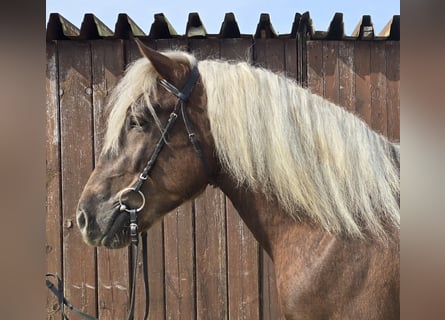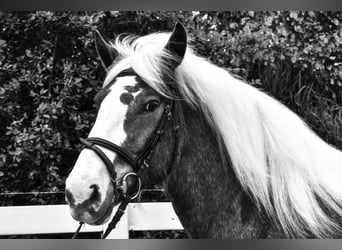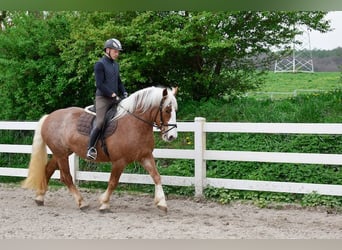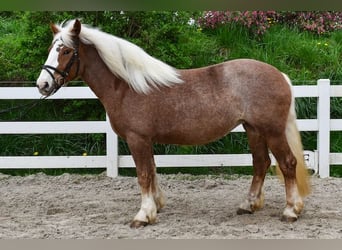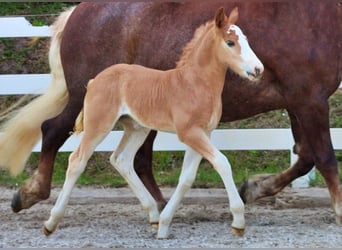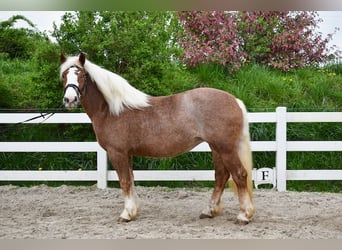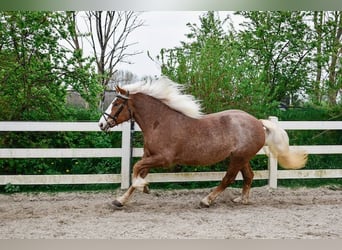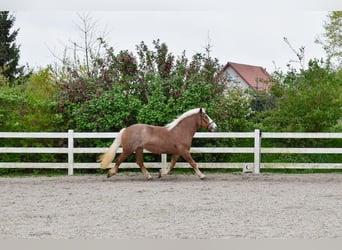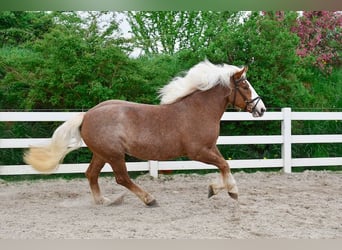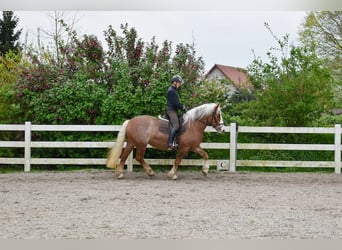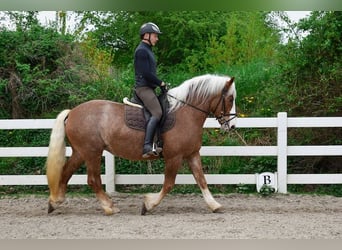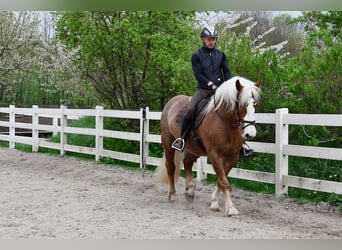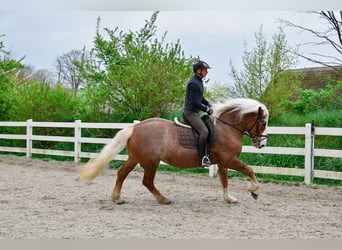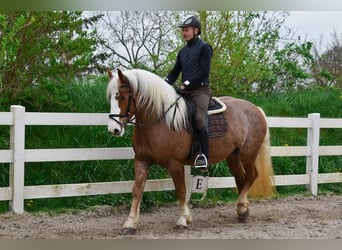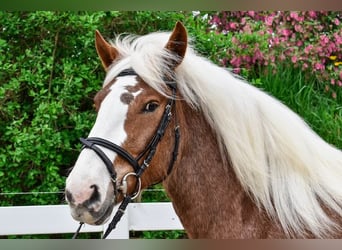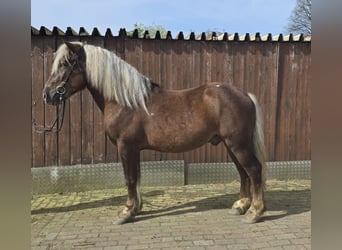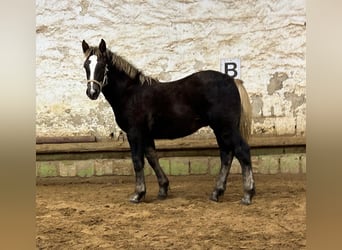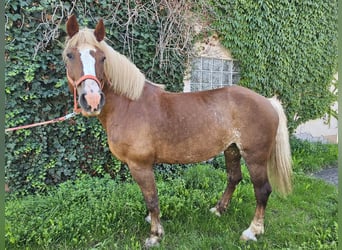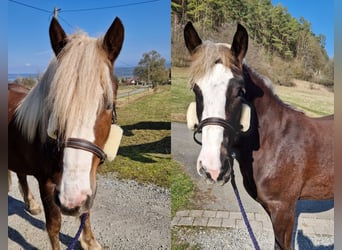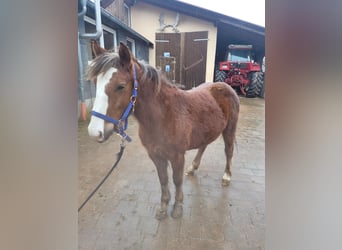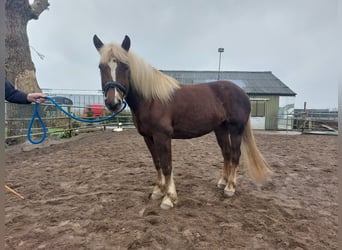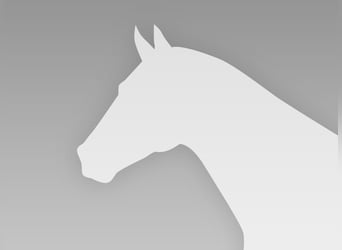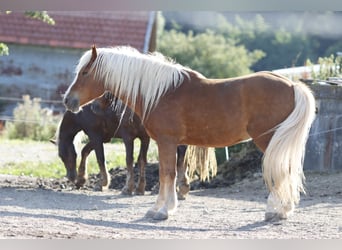Black Forest horses for sale
In addition, interested parties can directly see more information. This significantly increases the number of potential buyers.

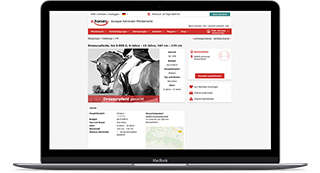
- j Describe yourself and your wishes
- j Receive your offer directly from certified buyers
- j Immediately online, duration of 90 days
Until a few years ago, the magnificent Black Forest Horse, known in its homeland as the Schwarzwälder Fuchs, was little known elsewhere. Now, interest is growing in this quality light draught horse from Baden-Württemberg in Germany. Strong enough to work in forestry and farming, yet attractive enough to create a sensation in the show ring, their versatility is inspiring more people to buy a Black Forest Horse. Since these horses are still fairly rare, breeders who sell a Black Forest Horse are dedicated to maintaining the quality of the breed, which they call “the pearls of the Black Forest".
Use and characteristics of the Black Forest Horse
Black Forest Horses have notable strength and elegance, yet it’s often their striking colour that first draws people to buy a Black Forest Horse. The only coat colours permissible are variants of sorrel or dark chestnut (“Kohlfuchs”, literally “coal-fox”) and the mane and tail must be blonde or flaxen. The dark chocolate colour known as “Dunkelfuchs” (dark-fox) is highly prized. This is always popular with purchasers when owners sell a Black Forest Horse since it contrasts so strikingly with the light mane and tail. Mares of the breed stand from 14.3 hands high (59 inches/148 cm) to 15.2 hands high (62 inches/ 156 cm). Registered stallions can be slightly larger, up to 16 hands (64 inches/160 cm) high. On average, they weigh around 1,100 lb (500 kg).
Origin and history of breeding Black Forest Horses
The Black Forest area of Baden-Württemberg in south-west Germany has had a reputation for breeding quality horses for hundreds of years. Six hundred years ago, the focus was on the excellence of the horses produced by the Abbey of St Peter. A type of horse known as the Wälderpferd, or forest horse, was highly valued for its strength and all-round capability. Whether or not this was the ancestor of the modern Black Forest Horse is uncertain, but it does point to a strong tradition of breeding versatile draught horses that stretches back through the centuries. St. Peter’s Abbey was not the sole producer of these horses. They were also bred at the Abbey of St. Märgen, giving them another name in early times, the St. Märgener Fuchs. The breed association and stud book both began in the same year, 1896. By this time, the beautiful flaxen mane and chestnut colouring were already breed standards, since selection for these traits had begun in 1875. The Black Forest Horse was at this point clearly a draught breed, with a muscular neck, handsome head and strong, clean legs ending in tough feet, and it became known as the Schwarzwälder Kaltblut (coldblood). They survived WWII, but like many other breeds were threatened by increasing mechanisation, resulting in a genetic bottleneck in the 1950s. After this time the breed was influenced by Noriker, Belgian Draught, Freiberg and Schleswig stallions. The breed is now considered to be endangered, with licensing standards for registration overseen by the Marbach State Stud. Registered youngstock are branded with a spruce tree. Potential stallions must pass a draught performance test before registration.
Black Forest Horses in equestrianism
Their stunning looks, calm and gentle natures and great strength make Black Forest Horses the stars of many parades in Germany. Wearing a traditionally decorated harness, they are an impressive sight as they draw brewery drays and trade vehicles. The first Black Forest Horses arrived in the UK to great acclaim in 2016. Today, more and more people around the globe are discovering their quality as riding horses, too.
Interior of Black Forest Horses
The Black Forest Horse is known for its calm and gentle temperament, which makes it ideal for both novice and experienced riders. They are highly intelligent and willing to please, which makes them easy to train. Additionally, they are very patient and have a good work ethic, making them excellent for use as working horses. These horses have a calm disposition, which is ideal for riders who are looking for a more relaxed experience.
Exterior of Black Forest Horses
The Black Forest Horse is a medium-sized draft horse that stands between 14.2 and 16.2 hands high. They have a muscular build with a broad chest and powerful legs. These horses are known for their striking black color, which is why they are named after the Black Forest region. The breed also has a long, thick mane and tail, which are typically kept unbraided. The head of the Black Forest Horse is small in relation to its body, with expressive eyes and a friendly, intelligent expression.
History of Black Forest Horses
The Black Forest Horse is believed to have originated in the Black Forest region of Germany, where they were used as working horses for agriculture and forestry. They were also used as transportation horses, due to their strength and willingness to work. The breed has been in existence for more than 600 years and was first mentioned in historical documents in the 17th century. However, the breed was almost extinct in the 20th century, due to the introduction of modern agricultural machinery. Fortunately, a group of breed enthusiasts came together to save the breed from extinction, and today the Black Forest Horse is considered a rare and valuable breed.
